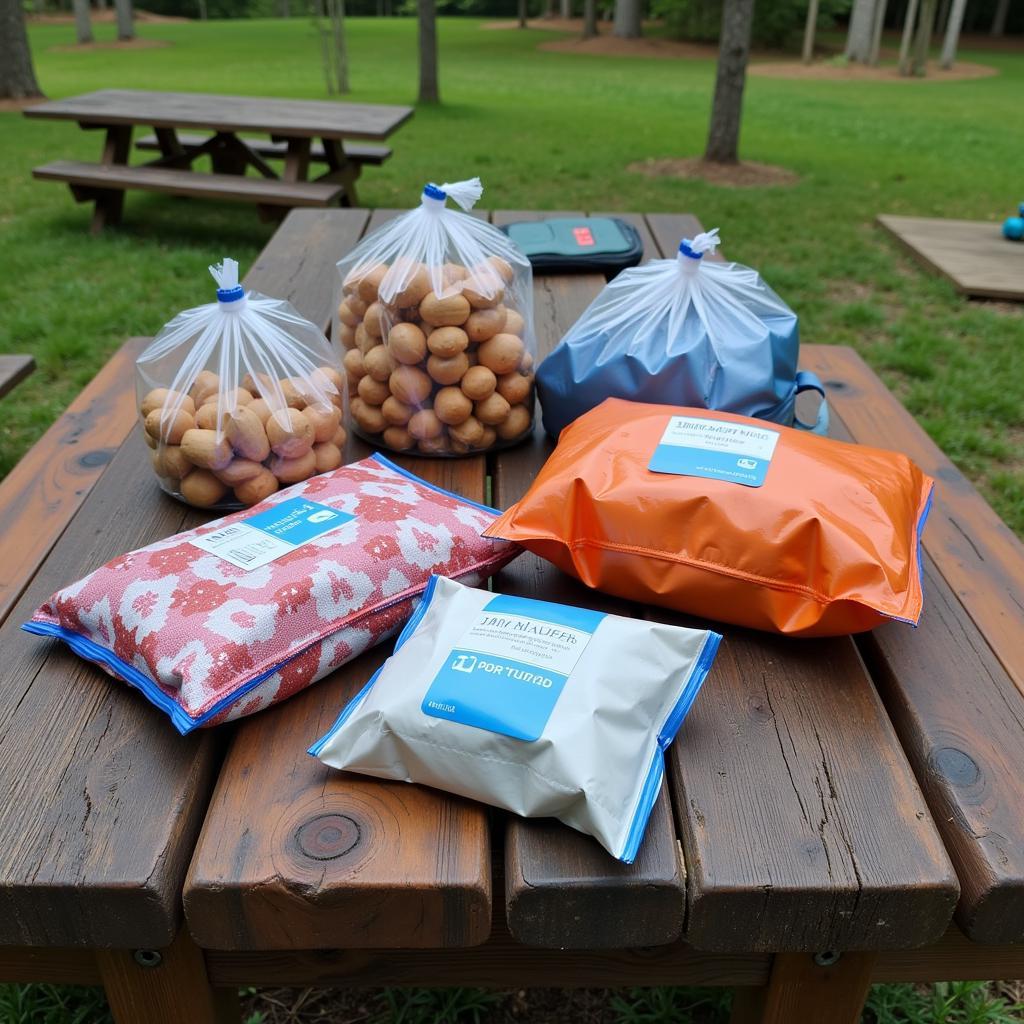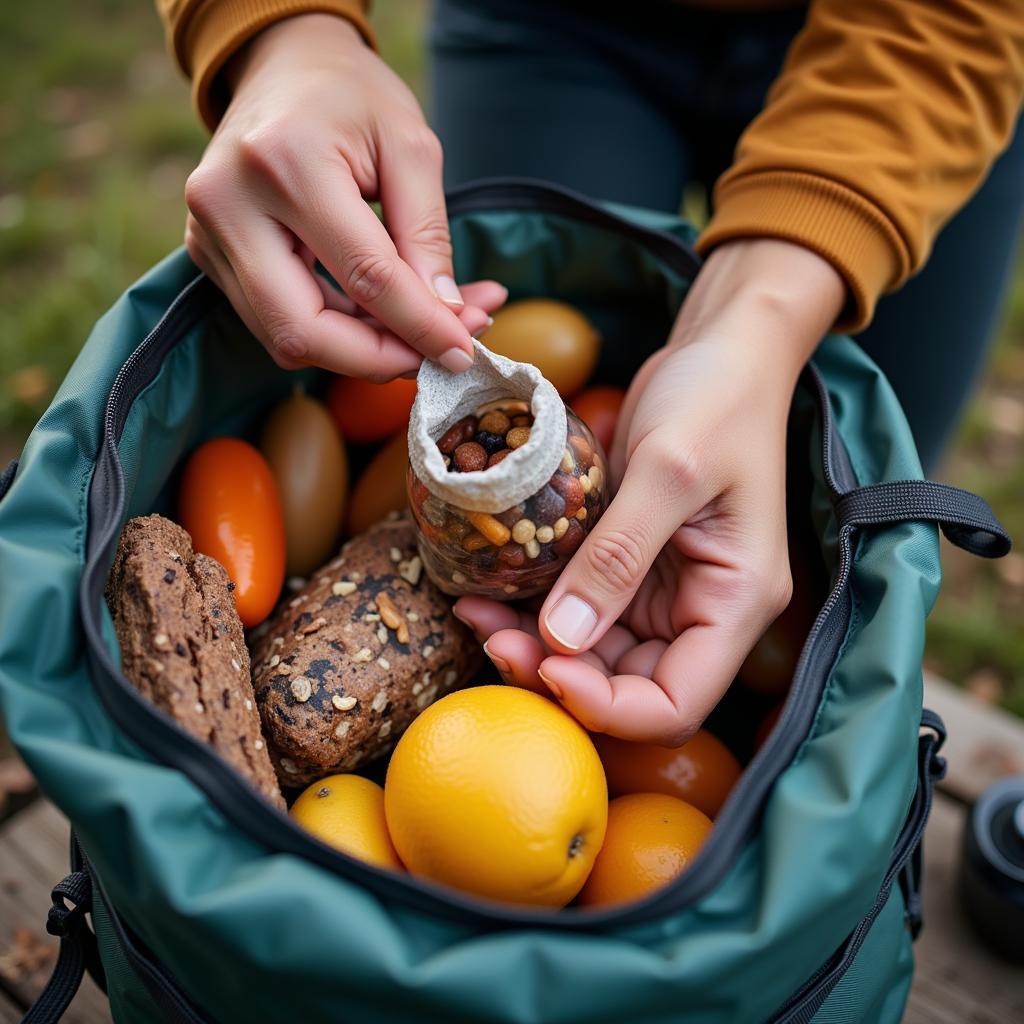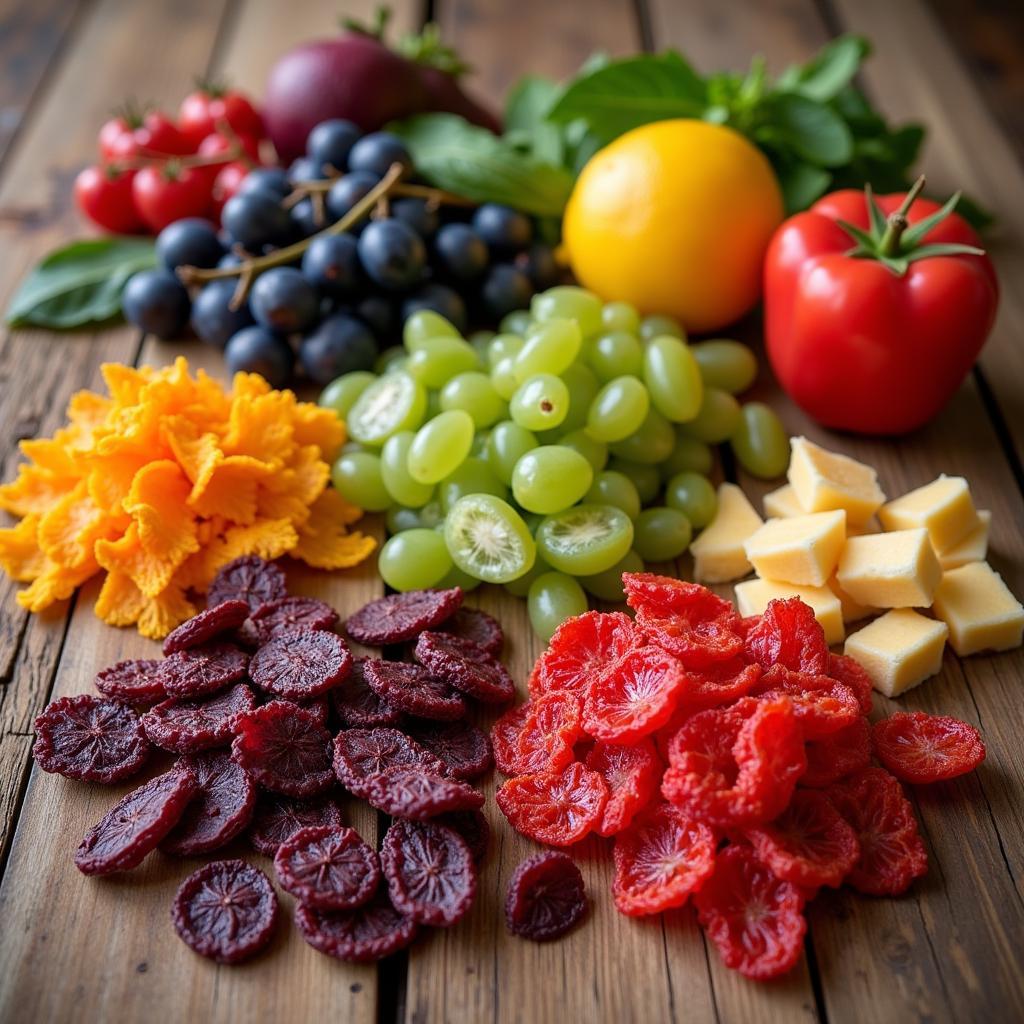Packing for a backpacking trip can be exciting and daunting, especially when it comes to food. Your Backpacking Food Bag is more than just sustenance; it’s your energy source for conquering trails and fueling unforgettable adventures. But how do you choose lightweight options that are both nutritious and delicious? This guide is your one-stop resource for building the ultimate backpacking food bag.
Factors to Consider When Packing Your Backpacking Food Bag
Before we dive into specific food choices, let’s look at the key factors influencing your backpacking food bag:
- Trip Duration: A weekend trip demands different supplies than a week-long trek. Always plan meals based on the total number of days and nights you’ll be on the trail.
- Activity Level: A more strenuous hike requires higher-calorie foods to replenish your energy reserves. Consider the intensity and duration of your planned activities.
- Personal Preferences: Do you have dietary restrictions? Allergies? Don’t sacrifice enjoyment. Prioritize foods you love and look forward to eating, even on the trail.
- Weight and Packability: Opt for lightweight, compact foods that minimize bulk in your backpack. Every ounce counts when you’re carrying all your supplies.
Choosing the Right Backpacking Food Bag
 Choosing the Right Food Bag
Choosing the Right Food Bag
Selecting the right food bag is crucial for keeping your meals organized and protected. Consider these features:
- Durability: Choose a bag made from sturdy, tear-resistant material.
- Water Resistance: Look for waterproof or water-resistant options to protect your food from the elements.
- Closure Mechanism: Roll-top or zippered closures provide secure seals to prevent spills and keep critters out.
- Size and Capacity: Select a bag that comfortably fits your food supply without being too bulky or heavy.
Essential Food Categories for Backpacking
A balanced backpacking diet should include foods from these key categories:
1. Carbohydrates for Energy
- Trail Mix: A classic for a reason, trail mix provides carbohydrates, protein, and healthy fats for sustained energy. Customize yours with nuts, seeds, dried fruit, and chocolate for an extra morale boost.
- Energy Bars: Convenient and calorie-dense, energy bars offer a quick pick-me-up on the go. Look for options with whole grains, nuts, and minimal added sugars.
- Instant Oatmeal: A warm and comforting breakfast option, instant oatmeal is lightweight, easy to prepare, and provides sustained energy.
- Tortillas: Versatile and lightweight, tortillas can be used for wraps, burritos, or even pizzas. Opt for whole-wheat tortillas for added fiber and nutrients.
2. Protein for Muscle Repair
 Packing Protein Sources
Packing Protein Sources
- Jerky: Lightweight and protein-packed, jerky is a great snack or can be added to meals. Choose lean options like turkey or beef jerky.
- Tuna Pouches: Shelf-stable tuna pouches are an excellent source of protein and healthy fats. Pair them with crackers or tortillas for a satisfying meal.
- Nuts and Seeds: Nutrient-dense and calorie-rich, nuts and seeds provide protein, healthy fats, and essential minerals. Pack a variety for different flavors and textures.
- Protein Powder: Consider bringing along single-serving packets of protein powder to add to your oatmeal, smoothies, or even just water for a protein boost.
3. Fats for Long-Lasting Fuel
- Nut Butter: Peanut butter, almond butter, or other nut butter are great sources of healthy fats and protein. Pack them in individual packets or small, reusable containers.
- Cheese: Hard cheeses like cheddar or Parmesan travel well and add flavor and fat to meals. Cut them into small cubes or pre-grate them to save space.
- Avocado: While they can be delicate, avocados are a delicious and nutrient-rich source of healthy fats. Pack them carefully or opt for powdered avocado for a longer-lasting option.
4. Fruits and Vegetables for Vitamins and Minerals
 Adding Fruits and Veggies
Adding Fruits and Veggies
- Dried Fruit: Lightweight and shelf-stable, dried fruit is a great source of vitamins, minerals, and natural sugars. Choose options like mangoes, apricots, or pineapple for added flavor.
- Dehydrated Vegetables: Dehydrated vegetables retain their nutrients and add flavor and texture to meals. Rehydrate them in hot water or add them directly to soups and stews.
- Fresh Fruit: Apples, oranges, and bananas are relatively durable and travel well for shorter trips.
Meal Planning Tips for Backpacking
- Pre-package meals and snacks: Portion out your food into individual bags or containers for each day to avoid overeating and keep things organized.
- Repackage bulky items: Remove excess packaging to save space and weight. For example, transfer spices into small reusable containers.
- Plan for variety: No one wants to eat the same thing every day. Pack a variety of foods from different categories to keep your taste buds happy.
- Consider no-cook options: While a warm meal can be comforting, having no-cook options ensures you have food ready no matter the circumstances.
- Don’t forget about treats: A few small indulgences can boost morale on tough days. Pack a small amount of your favorite candy, cookies, or other treats.
Backpacking Food Bag Essentials: A Sample Packing List
- Breakfasts: Instant oatmeal packets, dehydrated fruit, nuts and seeds, protein powder.
- Lunches: Tortillas, tuna pouches, cheese sticks, dried fruit, trail mix.
- Dinners: Instant mashed potatoes, dehydrated soup mixes, jerky, instant rice, spices.
- Snacks: Energy bars, trail mix, dried fruit, nuts and seeds, jerky, hard cheese.
- Electrolytes and Hydration: Electrolyte tablets or powder, instant coffee or tea bags.
Backpacking Food Safety
“Food safety is paramount when backpacking,” says registered dietitian Sarah Jones. “Proper food storage and handling can prevent foodborne illnesses and ensure a safe and enjoyable trip.”
- Store food properly: Use airtight containers to prevent moisture and pests. Keep your food bag in a cool, dry place away from direct sunlight.
- Pack out all trash: Leave no trace behind. Pack out all food wrappers, scraps, and containers.
Choosing the Right Backpacking Food for You
Remember, the best backpacking food is what works best for you. Consider your individual needs and preferences when making your selections. With a little planning and preparation, you can create a delicious and satisfying menu that will fuel your adventures.
Frequently Asked Questions
Q: How much food should I pack for a backpacking trip?
A: A general guideline is to pack 1.5 to 2.5 pounds of food per person per day, depending on your activity level and metabolism.
Q: Can I bring fresh produce on a backpacking trip?
A: Yes, but choose durable fruits and vegetables like apples, oranges, and carrots. Be mindful of weight and pack them carefully to prevent bruising.
Q: How do I keep my food cold while backpacking?
A: For short trips, you can pre-chill food and store it in an insulated lunch bag. For longer trips, consider using a bear canister or hanging your food bag from a tree.
Need More Help?
Finding the perfect backpacking food bag can be a journey! For more personalized recommendations and expert advice, contact us at 02437655121, email us at [email protected], or visit our store at 3PGH+8R9, ĐT70A, thôn Trung, Bắc Từ Liêm, Hà Nội, Việt Nam. Our dedicated team is available 24/7 to assist you in creating an unforgettable backpacking experience. Happy trails!